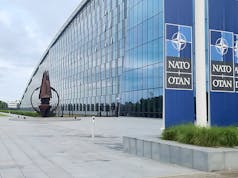Soldiers from The 1st Battalion The Royal Anglian Regiment, known as The Vikings, have returned to their core infantry role with a demanding live fire training exercise in Otterburn Training Area, Northumberland, ahead of a major deployment to Kenya next month.
According to a British Army news update, the battalion recently concluded two years providing Security Force Assistance (SFA) under 11 Brigade, during which it worked with allied forces abroad to deliver training and tactical advice. That experience, officers say, has strengthened the unit’s own combat readiness.
“Through the training we delivered, we were able to build strength and team cohesion with our allies and partners while improving our own warfighting capabilities,” said Major Paul Machnicki, Officer Commanding B (Suffolk) Company. “These valuable skills have been brought forward as we return to our core infantry role.”
The Otterburn training involved the Annual Combat Marksman Test and live fire exercises ranging from small team tactics to full platoon attacks, all using live ammunition in varied and often adverse conditions, including snow and sub-zero temperatures.
“Live fire tactical training involves moving and firing as you would do with a real enemy, using real rounds, real movements and real command and control,” said Major Jet Ryan, Officer Commanding A (Norfolk) Company. “It’s the best training the soldiers will experience.”
Major Machnicki, who helped plan the training package, added: “The core role of our soldiers is to close with and defeat the enemy through close combat. Soldiering is hard, and we need robust, resilient infantry soldiers to do the job. Working in an environment like Otterburn is perfect for honing their skills.”
The training prepares The Vikings for Exercise Bull Storm in Kenya, a brigade-level deployment that will contribute to 11 Brigade’s transition back to a frontline fighting formation.
The 1st Battalion, based in Woolwich, includes five companies with diverse roles. While A Company is the primary rifle element, B Company provides anti-tank and assault pioneer capabilities. C Company handles reconnaissance and sniper operations, D Company focuses on support weapons including mortars and machine guns, and HQ Company manages command, intelligence, and logistics.













This is a line that has been used a few times and it really annoys me;
The SpecInf/SFA role did not mean that you didn’t do infantry skills (yes I’m lumping them together because although the SFA’s did things a bit differently from the SpecInf battalions the role was basically the same). Everyone still had to be a good and competent Infantry Soldier, and exercises where regularly held up to company level (although yes a SpecInf Coy was smaller than a normal infantry Coy). The implication here is that 1 Anglians didn’t practice LFTT’s which of course is rubbish.
Also the final paragraph, to anyone who knows a bit about the Infantry is a dead give away that 11 Brigade is not returning to traditional Infantry work.
For reference, a normal Infantry Battalion will work like so:
HQ Company that supplies Logistics, Med and Command and Control.
A Company – A rifle company of 3 platoons
B Company – A rifle company of 3 platoons
C Company – A rifle company of 3 platoons
Support Coy – A company consisting of an AT Platoon, a Recce and Sniper Platoon, a Pioneer Platoon, a Mortar Platoon, and Machine Gun Platoon.
So if 1 RA now has a single Rifle Company and 3 Support Platoons, what does that tell you about their Concept of Operations? Simple, their core function is something other than closing with and killing the enemy.
Should have read single Rifle Company and 3 Support Companies obviously.
I am proud to have been a member of the Vkings in the 70s-80s and people need to know to get their facts straight before talking. The role of the Battalion is bound to change and I was a proud member of A company.
Cheers, it’s also only been 3 years since the Vikings took up the SFA role, so the doomerism in this thread is really unwarranted.
1 R Anglian (not 1 RA) has also not been based in Woolwich for a Number of years.
The Battalion isn’t even configured or strong enough to conduct Company or Battalion size live firing packages.
The SFA role has destroyed a once fully recruited and proud Infantry Battalion.
I didn’t mention Woolwich so no idea why you’re saying this to me.
I don’t know any Battalions that conduct LFTT these days at Battalion Scale, but 1 Anglians absolutely can and will have done Company live firing packages. As I said, SpecInf, the predecessor to SFA did LFTT’s and exercises up to Coy Strength, and SFA has a bigger emphasis on Platoon and Coy’s than SpecInf.
Destroyed? Dramatic nonsense.
“Royal” Anglians please.
Men have fought, and died, for the privilege of being awarded that title. Use it to honour them. Always.
Bore off. They are constantly referred to as “Anglians” without the “royal” across the forces and even by themselves.
So effectively they’re turning SFAB battalions back into light role battalions, but instead of the traditional three rifle coys and a support coy they now have to make do with a single rifle coy and their support coy split into three different coys.
This seems like the usual modern army bull of using corporate speak language to hide serious cutbacks and shortcomings. Has any officer or MOD official faced career repercussions for advancing the ludicrous SFAB idea that destroyed four infantry battalions? Thought not.
Will be very interesting to see more details regards 11 Brigade.
Excellent Dern, I was puzzling over that odd company ORBAT. Unless a couple of these fire support companies are going to revert to being rifle companies, your conclusion has to be right.
I hadn’t heard anything about 11 Bde transitioning to a Bde Grp force. I wonder where the armour, gunners, sappers and the rest would come from to form a brigade group? Also wonder if this means an end to the SFA role. SDSR could be interesting.
I don’t see it operating as a consistent Brigade Group. Aside from the Rifle light, support weapon heavy orbat of the units, being subordinated to LSOF along with the Rangers points to a very different ConEmp than being used as a Brigade Group.
These are units with 1/3rd the amount of Riflemen, but at least 2x (maybe more) Mortars, ATGMs, Snipers, Machinegunners, and Pioneers. That screams of a unit that is designed to supplement another formation that has a lot of rifles, but not much else. Possibly a local ground force that has a lot of reservists it can call up who have limited military training, and not much above that, but good local knowledge?
Ahhhhh. I think I see what you meant there in last paragraph. Hmmmmm.
So I wonder exactly what that front line role will be… clearly not light role infantry ?
Or Mec infantry…
The Vikings are not based at Woolwich anymore, they’re at Kendrew Barracks, Cottesmore, along with the Poachers.
And the picture is of the 2nd Battalion, The Poachers and not The Vikings…..
If you have professional quality Royalty Free images of 1st Battalion why not message George and send him them to use. I’m sure he’d appreciate it. If not, maybe understand that a volunteer run defence website can only publish header images it has access too?
I’ve heard online that 11 brigade is reroling to a tactical recce-strike which will become the deep recce strike for 1 divHow would you structure this formation would it be a combination of vehicle mounted 120 mortar Loitering munition launcher and long range ATGW vehicle. The recce side could be a mixed drones and EW warfare and ISTAR for the Div artillery. This could be the deep battle for 1 DIV.
I saw this mentioned a few weeks ago in discussions on Twitter
The 11th Brigade’s current structure is below, but as Shaun says… How would you restructure its battalions ?🤔
Brigade Headquarters, at Taurus House, Aldershot Garrison
1st Battalion, Irish Guards, at Lille Barracks, Aldershot Garrison
The Black Watch, 3rd Battalion, The Royal Regiment of Scotland, at Fort George, Inverness – to move to Leuchars Station not before 2029
1st Battalion, The Royal Anglian Regiment, at Kendrew Barracks, Cottesmore
3rd Battalion, The Rifles, at Dreghorn Barracks, Edinburgh – to move to Weeton Barracks, Blackpool not before 2027
4th Battalion, The Princess of Wales’s Royal Regiment (Army Reserve), RHQ in Redhill
Outreach Group, at St Omer Barracks, Aldershot Garrison
And again I’m going to say… this new tactical recce-strike brigade now must be inclusive of Reconnaissance and FPV drones, just like all other brigades!
At least one company in the brigade must be an FPV drone company
They can do day and night reconnaissance and strike targets 1-10 km or more from the frontline
John, scroll up and read what I wrote. This is not a brigade in 1 UK Div, nor is it a fighting formation, it sits under LSOF, and clearly is not meant to fight as a maneuver brigade.